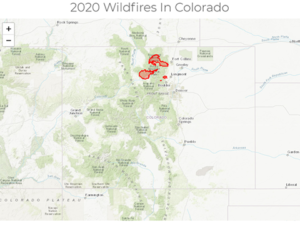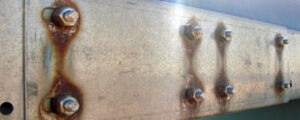Mitigate Wildfires with Non-Combustible Materials

Colorado Wildfires
Summer in Colorado means picnics and barbeques and outdoor sports like hiking, biking, and climbing. It also means drier weather, which can easily lead to wildfires. Due to extreme drought in mid to late summer, summers in Colorado can be hot and smoky affairs. Last year, the summer of 2020, was one of the worst fire seasons for the state in recent years and included three of our largest fires in recorded history.


Regulations on Fire Resistant Material
To help mitigate wildfire spread and loss of property, many areas have adopted fire-resistant construction requirements. One example of this is Appendix Z as adopted by Jefferson County, which applies to any structure above 6,400’ elevation in unincorporated Jefferson County. New homes falling under Appendix Z are required to use noncombustible materials (as defined and outlined in Section Z103) for exterior finishes including decks, soffits, roofing materials (Class A assembly required), exterior wall cladding, fascia, gutters, and windows.
https://www.jeffco.us/DocumentCenter/View/19231/Residential-Code-Appendix-Z—adopted-PDF

The state of California has created resources for assessing fire-resistant or noncombustible materials for use in construction that other jurisdictions have adopted. Jefferson County allows use of products that have been approved by the California State Fire Marshal (CSFM). These products have a Building Materials Listing (BLM) number and may be searched by product type in the link below. Additionally, most products that are approved for use in wildfire zones provide compliance information in their product data on their websites. It is important to confirm that the proposed exterior materials in wildfire regions meet the local requirements.
Regulations on Roofing Materials for Fire Prevention
Class A roof assemblies are one of the requirements of Jefferson county and other jurisdictions that suffer from wildfires. Some roofing materials meet Class A requirements on their own, while others may require special substrates or underlayment’s in conjunction with the finish material to meet a Class A classification. The following chart provided by GAF is a great resource for assessing the required assemblies for various roofing finish materials.
If you are considering building in a wooded or mountain region, there will likely be combustible material restrictions due to wildfire risk; be sure to check with the local jurisdiction as soon as possible. EVstudio has extensive experience building in mountain regions and can help with navigating design requirements.
Take a look at some of the mountain homes that we have built. Dickson Mountain Home Evergreen Colorado – EVstudio and Navigating the Design and Permitting Process for a Mountain Home – EVstudio









